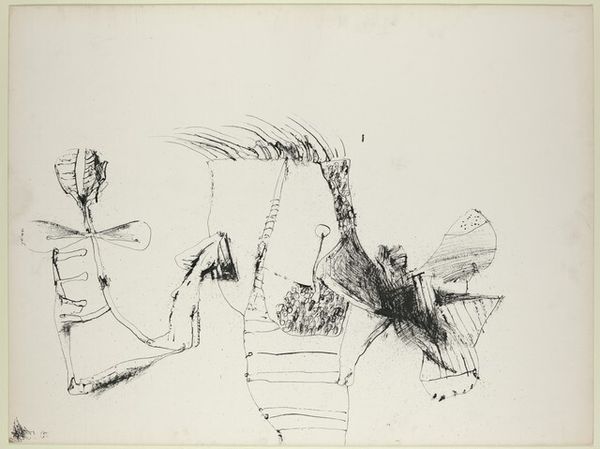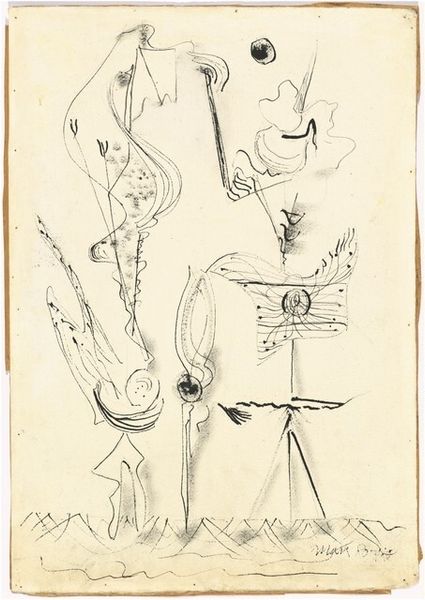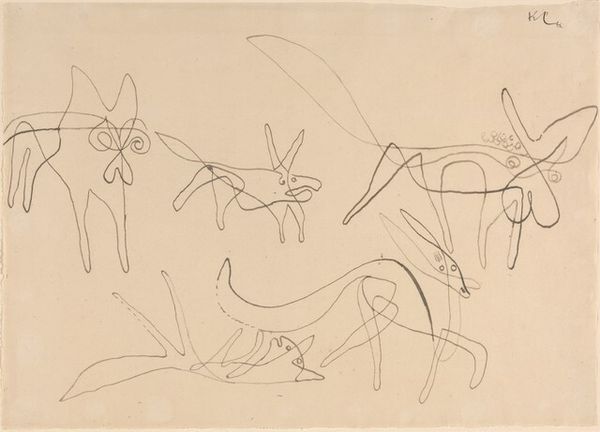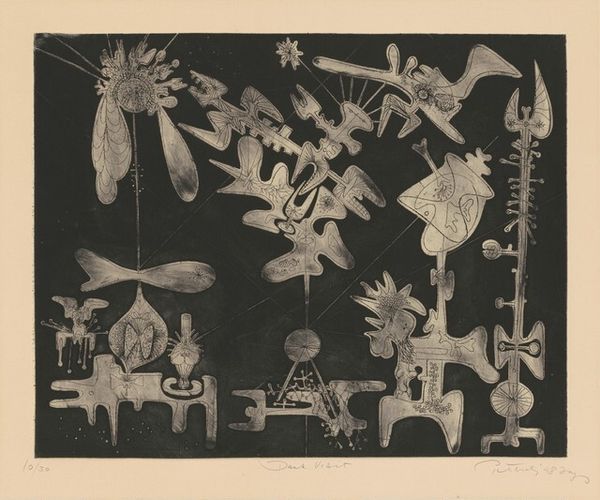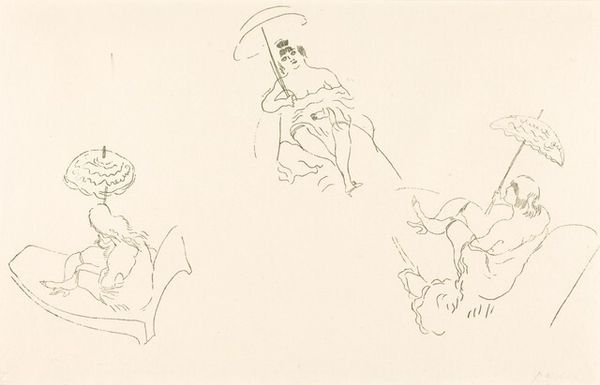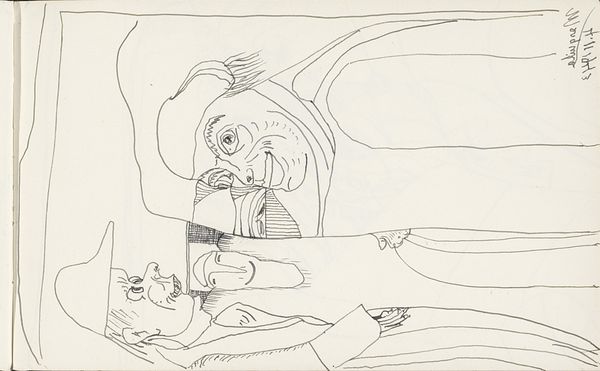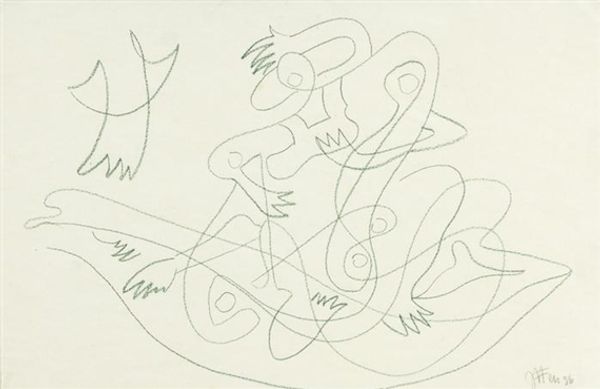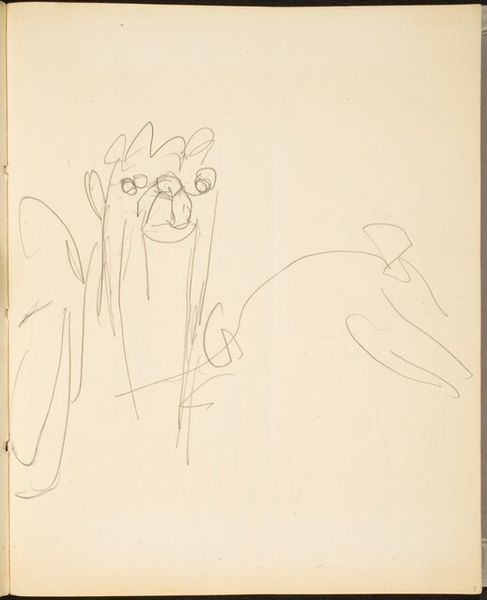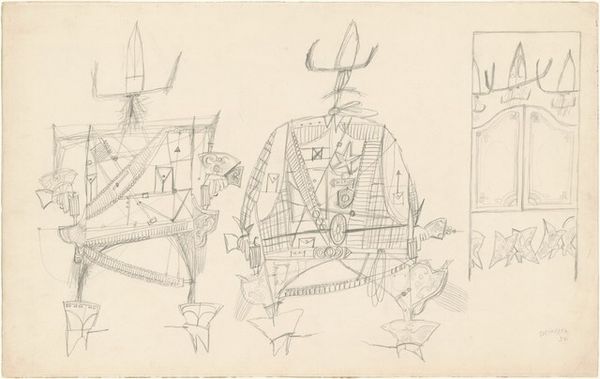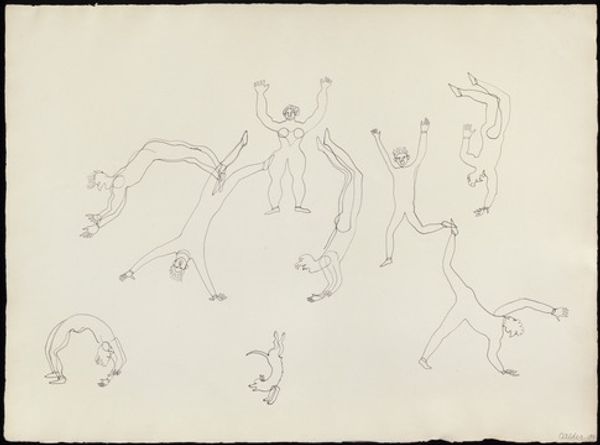
drawing
#
portrait
#
drawing
#
figuration
#
line
#
surrealism
Dimensions: sheet: 36.83 × 59.06 cm (14 1/2 × 23 1/4 in.)
Copyright: National Gallery of Art: CC0 1.0
Curator: Saul Steinberg’s drawing, “Three Women II,” from 1945 immediately strikes me as whimsical, almost satirical, in its portrayal of feminine elegance. It feels light and dark all at once. Editor: It’s fascinating how Steinberg deploys a very limited set of materials here – essentially ink on paper – to conjure such complex characters and a rather biting social commentary. It reminds me of the resources expended for the purpose of fashion at that period, considering the postwar austerity. Curator: Absolutely. And if we look at these figures within the socio-political climate of the time, in the immediate aftermath of World War II, these almost caricatured portrayals of women in high fashion offer a critical lens through which to examine constructed ideals of beauty and femininity. The surreal, almost bird-like features become symbols of a society clinging to outdated symbols of power. Editor: I am thinking more broadly about how he manages to evoke textures of fabric, fur, and feathers, all with a simple, linear language. And also, this relates to production. Are the materials simple because of postwar scarcity, or is that irrelevant? It's all meticulously hand-drawn, a laborious process which seems almost defiant in its analogue nature, even though these drawings are for newspapers. Curator: I think that it highlights the intersection of labor and the means of artistic expression in a commercial context, which really exposes how these are inextricably linked to a patriarchal vision of femininity at that historical moment. I agree. Look closely at the embellishments, almost like excessive ornamentation – those feathers. It becomes an ironic comment on the frivolous nature of high society. These adornments, while superficially decorative, also feel like cages, reinforcing restrictive social roles for women. Editor: It definitely has this dark absurdity. One last thought occurs to me, concerning the artist’s practice and how it intersected with publishing industry – this image’s original use context and placement, including questions of authorship and access that might not have even crossed people's minds. It's quite striking that they are signed, which makes me think about branding as well as material realities. Curator: That point about visibility and circulation is significant. Steinberg’s work prompts us to consider the ways images both reflect and shape societal norms, especially regarding gender and class. Editor: Indeed. A simple drawing with surprisingly complex material and cultural implications.
Comments
No comments
Be the first to comment and join the conversation on the ultimate creative platform.
